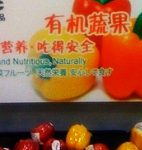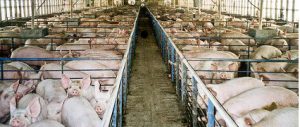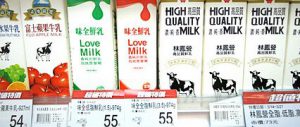Environmental group Greenpeace recently tested vegetables purchased in supermarkets and markets in Beijing, Shanghai and Guangzhou at a government-authorised independent laboratory in Qingdao. Traces of agricultural chemicals were found in 40 of the 45 samples that were tested, with a total of 50 different chemicals identified – five of which are classified by the World Health Organisation as highly toxic. One strawberry bought at a Beijing Wal-Mart contained 13 different agricultural chemicals.
This was not an isolated incident. Beijing Industrial and Commercial Bureau recently found levels of sulphites in seafood products produced by a well-known Hangzhou company that breached safety standards; a substandard batch of products has already been taken off the shelves. According to the National Business Daily, products from another four firms also failed to pass tests due to excessive levels of sulphites, sodium cyclamate, saccharin sodium and benzoic acid.
In the past two years alone, we have witnessed scandals over tainted pork and melamine-contaminated milk. People have lost their faith in food; they can only ask what there is left to eat.
To find chemicals in vegetables comes as no surprise, but the degree to which they were detected is shocking. And it is easy to identify these substances through testing, so how is it that they end up in the food chain? As a long-time observer of the food industry, I believe the following factors are to blame.
First, producers are only that: they are producers. They do not consume their own products. Farmers do not eat the vegetables they grow; they are sold to others. Chicken and pig farmers do not eat the meat they produce; they buy more trustworthy products at the market. But what if everyone thought that way? There is a joke about a vegetable farmer and a pig farmer who eat together: the former only eats the pork, the latter prefers to stick to the vegetables. Farmers do not use chemicals and fertilisers on the foods they grow for their own consumption. Farmers would be too ashamed to use their farmed chickens to feed their guests; they only sell those birds to the cities. But if you live in a city, you do not have a choice.
Second, higher quality products are more expensive to produce, and retailers are not interested. Agricultural authorities class products as organic, green, environmentally-friendly or standard; large differences in the cost of production are reflected in retail prices. A lack of oversight means that many products labelled “organic” or “green” are not what they purport to be. This means the costs are lower, but the profits are higher – so plenty of retailers are willing to play along, including large supermarkets.
Third, consumers cannot test products and can do nothing to control pesticide use. The new food-safety law allows consumers to claim up to 10 times the cost of a product in compensation if they discover it to be harmful, but consumers are unlikely to spend large amounts of money on third-party testing for the sake of a small reward. Consumers are clearly the weaker party in this transaction; they simply buy what the supermarket sells. The only hope is for the authorities to provide protection.
Fourth, there are major failings in agricultural production methods. Pesticides, fertilisers, herbicides, additives and agricultural membranes are the conventional weapons of modern agriculture. Now the authorities have popularised a new addition to the arsenal: genetically modified food. Out-of-season crops increase the levels of chemicals in foods. Intensive animal farming brings poultry to market in 28 to 45 days, pigs in 10 to 16 weeks. This battle against biology means our food is full of chemicals, hormones and additives.
Fifth, oversight is weak and unable to deal with food pollution at its source. Small-scale farming and numerous retail channels mean supervising food quality is problematic. Currently, testing is carried out at supermarkets and markets. But by that point the chemicals and additives are already in the food, and only a minority of products are taken off the shelves – the majority slip through the net. To keep the locals happy, local government play down major events and do not even report the small ones. Supervision by ordinary people is necessary to keep chemicals out of our food.
Sixth, scientists are not doing a good enough job. The confusing profusion of chemicals and additives is a new development. Scientists deliberately exaggerate the positive effects of their inventions and play down the negative impacts. Melamine was the “masterpiece” of a scientist without enough of a conscience. Yet the work of many chemists, biologists and agricultural scientists is focused on food production.
It would not be difficult to do away with the chemicals and adopt organic farming; the difficulty is getting a good price for good produce when our very food is traded by merchants who compete on cost. Relying on fines is inadequate: we need systems that supervise producers; that let consumers know where their food is sourced; and that allow third-party certification, with strict annual checks. Consumers should bear the costs of food produced in a healthy environment, in a voluntarily, market environment. If the number of genuinely organic products on the market were to increase, so would the demand for organic products.
We need food safety, and safe food must be produced in a healthy environment. We must gradually do away with chemicals, fertilisers, herbicides, agricultural membrane and genetically modified food. The costs and labour involved can be recovered through the sale of premium-priced organic foods, thus restoring the ever-deteriorating rural environment.
Homepage image by kwramm


